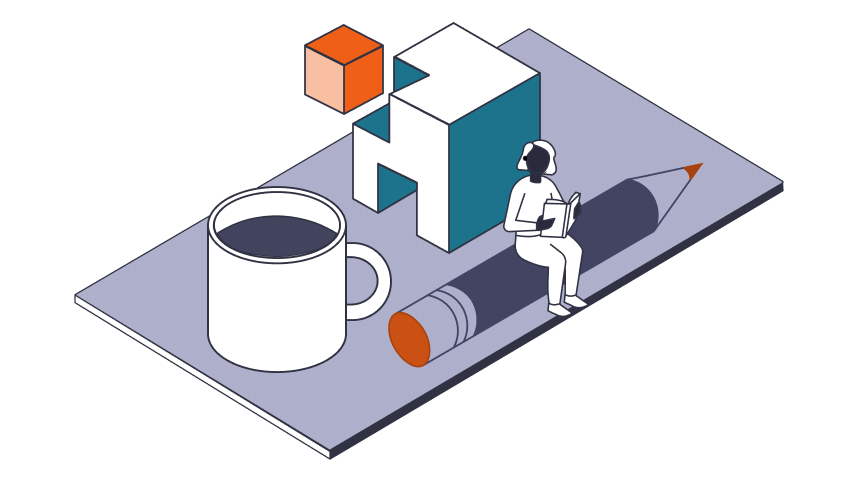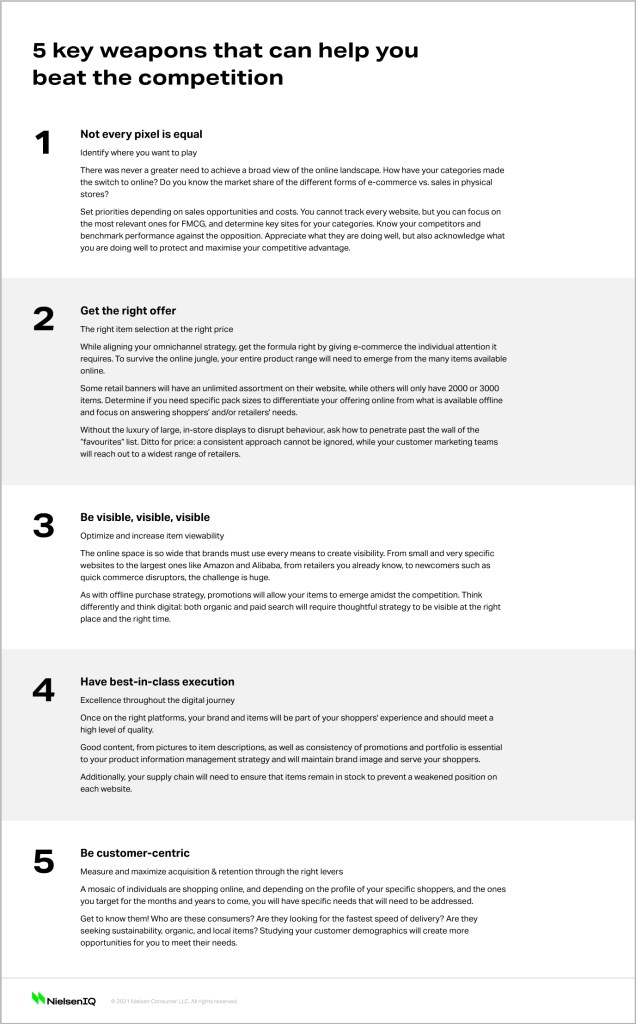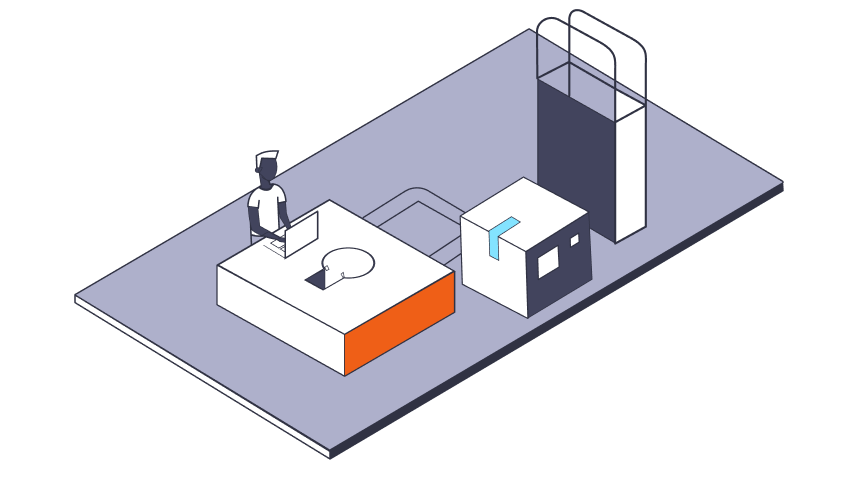U.K. shoppers switching to online
For online consumers, connectivity is a significant enabler: it has improved consumers’ ability to search and compare products and services, it highlights product availability and prices, and it fosters product order and delivery at desired locations and times.
Consumers are more and more willing to expand their online purchasing behaviors, particularly to include food such as alcoholic beverages and packaged groceries. Now, even fresh groceries, vegetables, and meat get traction online.
Within this FMCG online sector, the U.K. appears to be the best in class in Europe, with shoppers embracing online purchasing trends: 11% only buy grocery products online, for example. European neighbors are expected to follow this move in coming months and years, ensuring that the food market will never be the same.
A mosaic of e-shoppers to delight
As manufacturers and retailers seek to capitalize on e-commerce, they need to understand consumers’ online usage, behavior, and habits, and the differences between each shopper group.
Regardless of country, there is no one single type of online shopper. From rookies to digital natives, a mosaic of e-shoppers can be met online.
In the U.K 42% of e-shoppers are “digital rooted” which is far more than any other European country. These e-shoppers are “onlife”, or living online, and use the internet everywhere, during every step of their path to purchase, leveraging connected devices and the internet of things (loT).
However, retailers and manufacturers cannot capitalize on digital natives alone, even in the U.K. Among other groups, “digital bouncers” represent 1 out of every 4 e-shoppers and cannot be ignored. They use the internet pre- and post-purchase, but the act of buying a product still happens offline.
Understanding the whole journey of each targeted group will be key for online players as they strive to address their needs online, influence their offline purchases, and ultimately lead consumers to purchase online.

Be confident in your next e-commerce move
Now is the time to ensure you possess the most comprehensive visibility of the landscape and potential opportunities in this ever-evolving channel.
Look no further.
Activating the right triggers
By keeping in mind the different types of shoppers, brands and retail banners can target them with the most relevant triggers.
For most shoppers, convenience is the primary facilitator of connected commerce: they look for frictionless experiences that save time, reduce obstacles, and provide an enjoyable experience.
Implementing a wide range of assets can make the difference. Processes that cut down on wasted time, the offer of free delivery for high-value baskets, customer service responsiveness, and a wide range of products are assets that encourage consumers to purchase food items online.
Consumers’ considerable willingness to try different options for purchasing, payment, and delivery has also grown over the years and created a smoother user experience.
On the other hand, some factors can impact online adoption, such as:
- Limited FMCG assortment
- Inability to touch and smell fruits and vegetables
- Difficulty in finding the right grocery products
- Frequency of products being out of stock
- A lack of information about items
- Unclear navigation from one page to another
- Unsuitable options related to payment or retrieving the order
For Clément Colin, a European e-commerce leader at NielsenIQ, the view is different between retailers and brands.
“Retailers answering shoppers’ needs and offering relevant features will improve consumers’ adoption of e-commerce across food categories. But for manufacturers, let’s keep in mind that online shoppers are more loyal to a website than to a brand. Therefore, they can be interested in shortcutting retailers and gaining direct access to their shoppers.”
Tea in 10 minutes: A revolution for the user?
While many developments happened recently in the e-commerce world, one in particular cannot be ignored—the rise of “quick commerce.” What if you discover that you’re out of tea while guests are ringing the bell? Are there not enough mushrooms for your risotto when you start cooking? Want to order a bottle of wine while in a taxi and about to arrive at your friend’s apartment?
The promise may sound unreachable at first glance, but Getir, Gorillas, and Flink, among others, deliver in 10 or 15 minutes thanks to dark stores opening in many European cities. This “quick delivery” form of e-commerce has captured attention in the FMCG space and is poised to be a disruptor of standard e-commerce best practices.
Is quick commerce the next big thing? Let’s keep an eye on it.
“Whatever the kind of e-commerce, once you create a relationship with the shopper, the next challenge is to activate her or him,” Colin adds. “Especially if the purchases are made at a specific frequency. This way, online players transform the experience into a kind of subscription and are definitely the best way to retain the shopper.”


NielsenIQ acquires Foxintelligence
By adding billions of new consumer data points to our gold-standard retail measurement core services, our clients will get a unique omni-sales view across all major categories in Europe – all in one place.
Methodology
NielsenIQ Shopper Survey.
- The Digital Unplugged are reluctant to use any digital device and they shop purely and exclusively offline.
- The Digital Rookie uses the internet but still with a bit of distrust. They have the physical store as their point of reference, but they are trying to move into the digital world despite using outdated technology and purchasing primarily via PC.
- The Digital Bouncer uses the internet pre- & post-purchase, but the act of buying a product still happens offline.
- The Digital Engaged uses the internet without any problem (especially from mobile devices). They don’t mind using new and more evolved payment solutions.
- The Digital Natives live “onlife”, using the internet during every step of the path to purchase by leveraging the connected devices and the loT.




